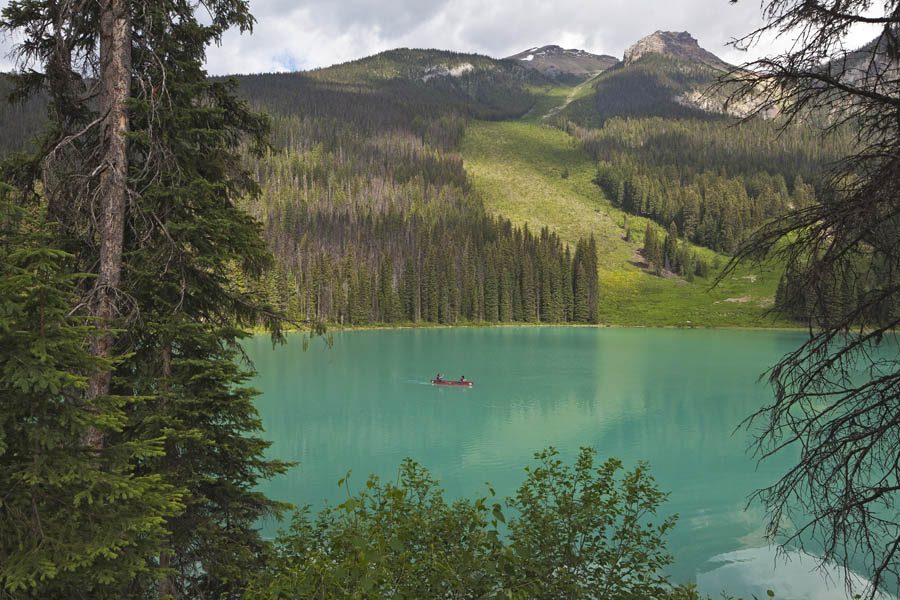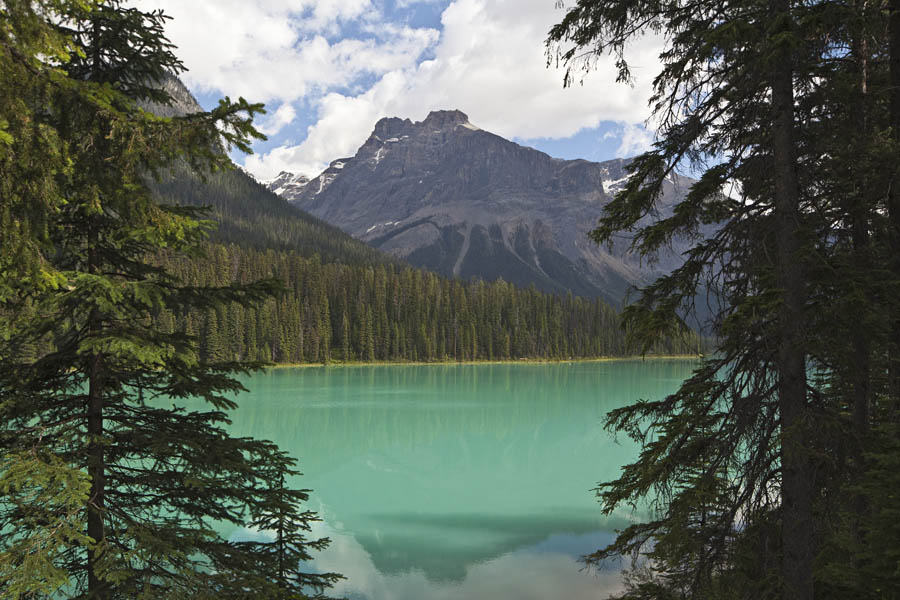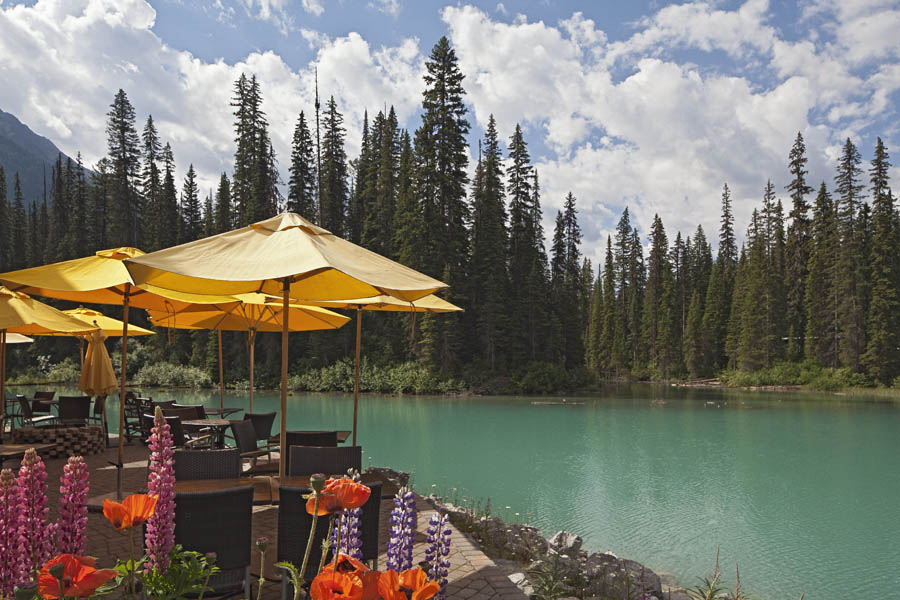Earlier this week, I returned to the area of Field, British Columbia, visited last week (Yoho Valley Road). After taking some pictures around the town, I returned to an old favourite location, nearby Emerald Lake. (I posted some pictures from Emerald Lake , last September.) The weather was beautiful and the place was overrun with tourists making it a great day for photography, but not without some challenges working around all the visitors.
Emerald Lake is aptly named, just look at the colour of the water! My first picture features some tourists enjoying a canoe ride on the placid waters of the lake. As I have mentioned before, the water carries suspended solids termed “rock flour”. Rock flour, or glacial flour consists of fine-grained, silt-sized particles of rock, generated by mechanical grinding of bedrock by glacial erosion. Because the material is very small, it becomes suspended in glacial meltwater, making the water appear cloudy. When the sediments enter a river, it turns the river’s colour grey, light brown, iridescent blue-green, or milky white. If the river flows into a glacial lake, the lake may appear turquoise in colour as a result. The well known glacial lakes in the Rockies; Peyto Lake, Moraine Lake, Lake Louise and Emerald Lake for example all exhibit brilliant shades of turquoise, all slightly different from one another. On a brilliant sunny day, it’s hard to beat the shimmering beauty of Emerald Lake.

I moved a little further down the shoreline for this next picture of the lake, featuring Emerald Peak in the background.

My last picture for today was taken near the bridge crossing Peaceful Pond. At the end of the bridge is a very nice cafe, named Cilantro’s. It’s a great place to sit and enjoy the weather on a day like yesterday. It was a little early for lunch when the picture was taken, so nobody appears in the photo.

Note of Interest for Photographers: These pictures were all taken using my recently acquired tilt-shift lens. It’s a 24 mm focal length prime lens with the unique ability to pivot (tilt) and shift laterally the forward part of the lens. I used both the shift and the tilt features to take “Peaceful Pond at Cilantro’s”. When I composed the scene initially, I was unable to to include the tree-tops in the frame. Rather than point the camera upward at an angle, I “shifted” the forward part of the lens vertically. It required a very small shift since the lens is a wide angle. By keeping the camera sensor parallel to the picture plane, I avoided distortion that would result from tilting the camera upward. With the scene composed, I used the “tilt” feature of the lens to focus. This lens is entirely manual, no auto-focus and it does require some iteration to get it just right. Tilting the lens forward into the image plane takes advantage of the Scheimpflug principle to effectively increase the depth of field and make the image sharp throughout without using a smaller aperture. With the entire depth of the image in focus, I took the picture with the aperture at f8, enabling me to get the best possible image quality.
If you inspect the images closely you should be able to see that they’re sharp from the foreground to the background. To note the benefit of shooting at f8 vs f16 or greater, you would need a much larger screen or print to perceive the difference.

Wonderful compositions, Peter. Effective in capturing the spirit of Emerald Lake. The sharpness of focus – near and far – ads much.